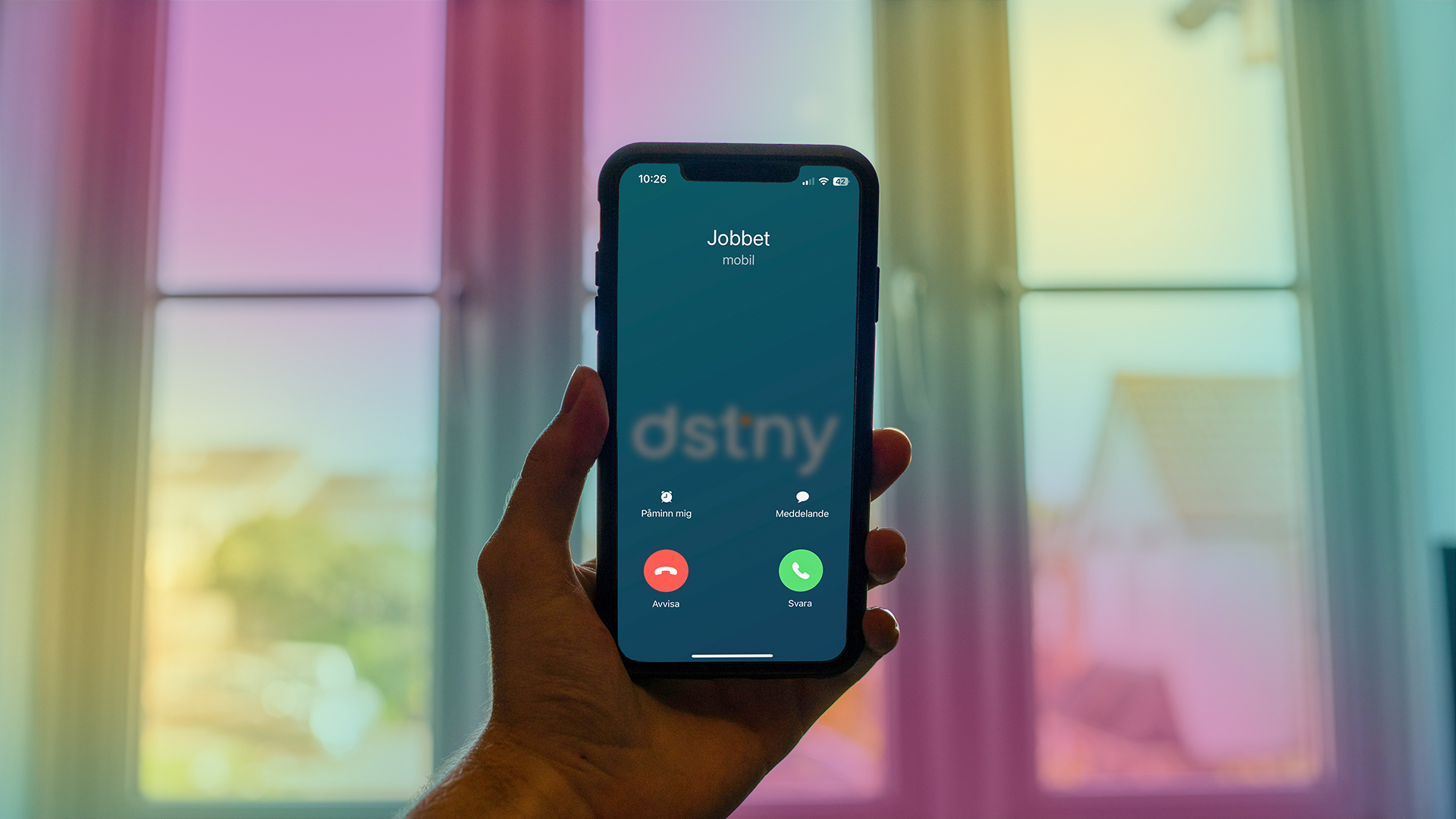What is Call Waiting? – Dstny explains!
Sometimes you want to know if you have calls waiting, for example, if you're stuck in a long phone call but expecting another call. Perhaps you're on hold to book a doctor's appointment while also waiting for that crucial call from your job – then it's good to have Call Waiting activated. Call Waiting is a smart feature that allows a person engaged in a call to be notified simply that another call is incoming, giving them the opportunity to end the current call and answer the incoming one instead.
If you use the Call Waiting feature on a phone with a display or in a Softphone, you may also, in some cases, see who the incoming call is from.
How does Call Waiting work?
The Call Waiting feature can be used on most phones so you don't miss calls. You can have the feature on mobile phones, many landline solutions, and in your Softphone, i.e., your phone on the computer.
When a call is waiting, you hear two discreet tones alerting you that someone else is trying to reach you. Call Waiting can be a very useful function for those who want to avoid missing important calls.
Do you need to activate Call Waiting?
It can vary a bit from phone to phone whether you need to activate the feature to hear if there are calls waiting or not. In many cases, it is activated as a default directly on the phone, but sometimes you need to go in and make a setting for Call Waiting to be activated. If you're unsure, you can always go to settings on your mobile phone, where you usually can see if it's activated or not. You can also contact your operator and ask them to help you activate it if the settings are not directly available on the phone.
Activate Call Waiting on iPhone
If you have an iPhone, you'll find Call Waiting under settings. Click on the Settings app. Then click on Phone. There you'll find the option for Call Waiting, click on Call Waiting, and activate the option. Now Call Waiting is activated on your iPhone.

See who's calling
Most phones today, both mobile and landline, have a display. When you hear two beeps during the ongoing call, you can look at the display to see who's calling. This gives you the opportunity to choose whether to continue with the ongoing call or take the new one.
For business owners, Call Waiting can save a lot of time. If a customer you've been trying to reach for a long time finally calls while you're in another call, it's good to answer. Then you don't have to continue trying to call and chase the person you really need to get in touch with.
Call Waiting also provides the opportunity not to answer a call. Perhaps you're waiting for an important call but see that it's a person you don't want to talk to calling when you're in another call – then you don't have to answer and can avoid taking the call.
Shared lines
When a call is waiting, an audible signal is created at the recipient's end. Because of this, Call Waiting can cause dialed internet connections to disconnect. Therefore, the function is often deactivated on shared voice lines used for dial-up modems. However, Call Waiting has no impact on DSL connections.
The history behind Call Waiting
So when did people start using Call Waiting? The feature was introduced in North America in the early 1970s, at the same time as the first generation of electronic switches was built by Western Electric. It was the Electronic Signaling System 1 that began replacing an older generation of mechanical telephone exchanges. In the beginning, some smaller communities could offer their businesses the Call Waiting function on a specific telephone exchange. For example, telephone customers in Trenton, Michigan, had to have a phone number that started with 671 to be able to use Call Waiting because the phone numbers starting with 671 were the only ones in the area supported by the new ESS switches (Electronic Signaling System). But the demand grew from customers, and as the old switches were replaced, more people gained access to Call Waiting.
During the same period, Call Waiting was also launched around Europe. In Europe, the function came with the first digital switching systems like Ericsson AX, Alcatel E10, and System 12. Other digital systems also supported the service, such as System X in the UK. In the 1980s, switching systems like the German Siemens/Bosch EWSD got the Call Waiting function.


